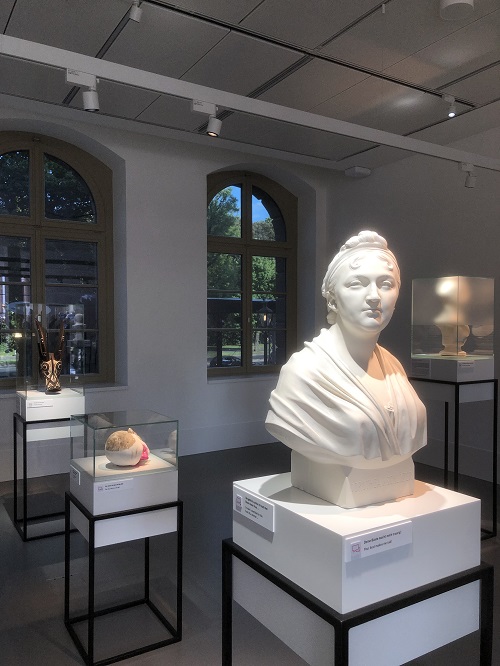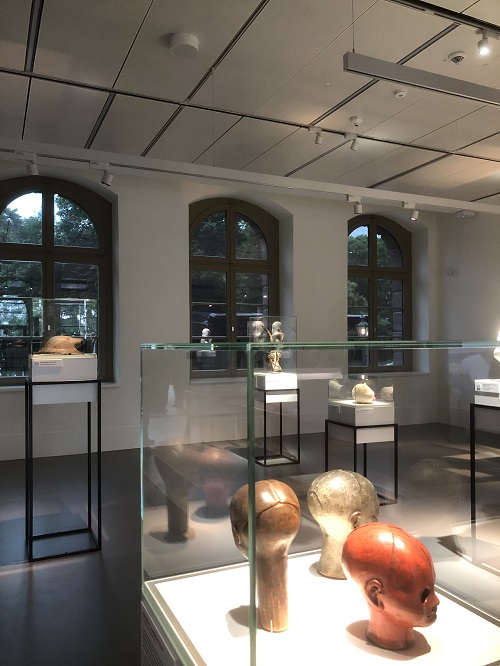
Most people will understand the frustration of books, art or furniture becoming discoloured over time, especially when placed near windows and exposed to light. For museums and libraries, limiting light damage is a key priority.
Photochemical action occurs when there is an irreversible molecular change to the structure of the material due to visible light. As a result, the item in question can experience a noticeable fading in the colour of textiles and manuscripts, as well as surface cracking in other types of artefacts. Many establishments will find it difficult to provide suitable external or internal sun protection without causing the building to look closed or lifeless.
The Forum Wissen museum in Göttingen, Germany, was looking for a solution to reduce the amount of solar radiation entering its exhibition areas. External shade was prohibited by laws that governed the preservation of the appearance of historical buildings, but regular glass offered no control over incoming light. This would cause the building to heat up, making temperature control for the building complex to achieve.
Decisions regarding windows for buildings exhibiting sensitive and important artefacts is an important one, as it affects light, ventilation, ambient temperature and humidity, as well as establishing the psychological connection with the outside world. Architects and the planning team at the Forum Wissen museum decided against a conventional form of sun protection for conservation reasons, instead opting for innovative dynamic liquid crystal glass.
As an unprecedented plan, it was not without its challenges. Namely, most switchable glass on the market, based on electrochromic technology, did not offer natural colour reproduction inside rooms (impacting the appearance of the artwork) and would have given the outside of the building a chromatic reflection. Electrochromic glass has inherent limitations when it comes to switching speed and shows characteristics of blue glass appearance in the tinted state, which has a significant impact on the visual quality of the indoor environment and perceived colour and brightness of illuminated objects.
For this reason, the university was initially planning to develop their own glass, but this could prove costly and time consuming.
During a trip to Glasstec- an international trade fair for glass production, processing, and products- the university was introduced to eyrise, the company that offered a solution.
Instant solar shading glass
eyrise sustainable switchable glass is driven by liquid crystal technology, controlling incoming solar heat and sunlight in an instant, as well as allowing daylight quality to be adjusted while preserving outside views. This is the only dynamic glass that immediately reacts to user input, so switching between states is instantaneous.
Standard eyrise s350 glass has a neutral colour, so it will not distort the appearance of anything displayed inside the building. Moreover, the liquid crystal and dye molecule mixture can be tailored for different colours upon request.

eyrise works differently to its competitors and is much more customisable. While electrochromic glass, the most common technology for switchable glass in the market, is based on a chemical process similar to a battery which charges and discharges, liquid crystal technology is based on a physical process. Liquid crystals are placed between two glass sheets that are coated with a transparent conductive film. When voltage is applied via user input (using a sensor or control system), the crystals change their orientation and the amount of light transmitted. Their reorientation is instantaneous, creating instant shading and temperature regulation to maintain a comfortable environment, and allowing for precise tuning of the intensity of the light, haze, and glare while preserving natural light and outside views. For this reason, liquid crystal glazing represented a higher-performing alternative because of its differentiating factors and technological competitive advantage.
Forum Wissen museum was the first museum to feature liquid crystal dynamic glass and the first customer renovation project after eyrise headquarters, so this was exciting new territory for the eyrise team. The renovation consisted of replacing the current glass while preserving the pre-existing frames, which involved making adjustments (as eyrise glass is thicker than normal glass). It was required by law that the Georgian bars and rounded shape at the top of the windows were preserved. This shape presented a unique design challenge in terms of achieving the desired electrical connectivity needed for uniform switching, and was overcome by embedding Georgian bars inside of the glass and designing the upper part in a way that it would appear rounded.
The eyrise glass installed at Forum Wissen controls how much daylight radiates into the room, with 33% getting through at the bright shade setting and only 3% at the darkest shade. This provides the low light transmission required by the museum, but it also allows the museum to adjust how much light gets in depending on factors such as weather conditions.

These adjustments are made automatically through the museum’s control system, which alters the state of the glass and allows the glass to dim based on the incoming amount of light detected by a sensor.
Its installation set a new precedent for what can be achieved in museum spaces and how they can control incoming light and heat, which is integral to preserving art and antiques. In its dark state, museums, galleries and libraries can rely on eyrise glass to protect their exhibitions from solar rays without sacrificing the historical aesthetic of the building.


